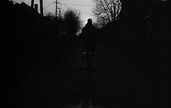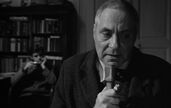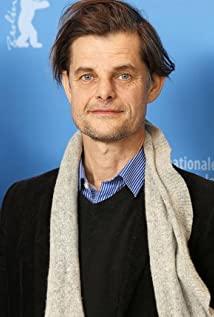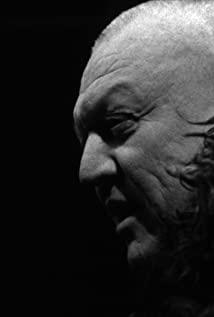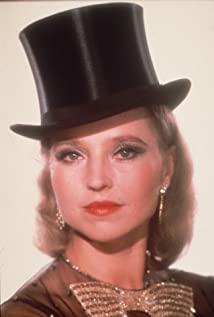The best way to shoot is to place the camera in a fixed position, take a panoramic view and group portrait, and add a little push, pull, and pan if you want more. When the first filming was made, the teacher sat next to me, and he told me while watching the short film of the students, don’t use long shots, but must break down the shots, look, change, and change...you need to use several for one action Lens to express. I believe that everyone will go through the painful "growth" process of breaking down an action into countless shots, and then look up and ask innocently: Why can't we use long shots? ? ?
After watching Bella Tal, I really want to draw the innocent kids (including myself) who claim to have used a long lens. Long lens is not equivalent to a static record. Do you think you are Lumiere? It is a higher artistic expression technique. The reason why a master uses a long lens is a master, and we use a long lens is not influential, because we don't understand movies, let alone scheduling.
In my opinion, editing is to avoid unnecessary trouble in performance, such as taking a picture of a person who is walking. "Normal" can be to take a picture of a passing back and then take the front to the next location. However, for long-shot follow-up, it is necessary to lay the track, and the route to be walked must be carefully arranged. The director must have all possible scenes in the mind of the director, instead of watching the actors walk to the same position, he will stop at the right time. Market-oriented productions such as Hong Kong films will obviously not choose long shots. They will use editing to explain the plot in a simpler and time-saving way, but they have to admit that the follow-up is more tense, and each frame can convey long emotions. The filming method that relies on editing can be seen in almost every movie, but the long shots that all rely on on-site shooting are very rare.
Bella Tal’s shot of the square in "The Whale Circus" was amazing. Taking photos of all kinds of people in such an open outdoor scene like a square, and always following in the footsteps of the main characters, showing the state of different people. A long shot has close-ups, close-ups, panoramic views, and the alternation of sceneries never seems cramped. ——This is called a master.
One of the long-lens movies I have watched that I can’t forget, one is "You Are Alive", the lens is almost still, but it is not in a passive position, but has a strong initiative, the director is fixing the lens After that, the actors were fully dispatched, and the lens space was divided into multiple levels. Each scene was not flat, but one layer led to the next, as rich as a game maze. In the face of Bella Tal, his control of the camera is perfect. Thirty shots constitute a 140-minute movie. It is not lazy, but greatly increases the difficulty of shooting. I even watch the movie. Follow the speculation, to show how the next action director will move the camera? How to prepare? What effect will it have? And the transfer of every picture always slips away from my eyes, because his long lens is easy to use, and every lens is not in a hurry, and there is absolutely no cramped push or pull. Just a simple example: the last old man in the film talks with a young man sitting in a hospital bed. The beginning of this shot is a close-up shot, the front of the two people. When the conversation comes to an end, the camera slowly starts to pull out. At this time, the audience's attention is still focused on the old man's unfinished speech. When the conversation is over, the camera has been quietly Slide out enough space so that the elderly can stand up and walk out until they get out of the camera and still maintain the beauty of the picture... This is just a small example, the more complicated scheduling in the film, not the text can be analyzed clearly .
This kind of film can be said to restore the artistic essence of the film to the greatest extent. Perhaps more people will think that the essence of film is technical, because we are used to using the camera as a tool for conveying ideas. Half of the film depends on shooting the other half. Clip. But what if you really think of the lens as a paintbrush? Truffaut, who advocates authorism and "camera pen", only raised the position of director on the external level, but did not explore the "pen" characteristics of the lens itself. In Bella Tal’s long shots, the rich sceneries and full of emotions depend on the director’s careful arrangement and attention to the shots. There are no so-called subjective shots and objective shots that are common in editing. Each shot represents With the director’s scrutiny gaze, he "recorded" the story as he was always present. The protagonist of the movie itself was also the object of recording. Only the eyes behind the camera can control the situation... Thinking of this, There is always a kind of sacredness in my heart...
This kind of narrative permeates the director’s strong subjective color, and this feature is more obvious in "A Man from London". Many times we can see that the protagonist enters the space and exits the space. The camera often deliberately You have to stay on a small object for a while, such as a lock, a ray of sunlight, and sometimes there will be soothing music at the right time... At this time, the movie temporarily broke away from the narrative, but developed its own poetic space, if you say The narrative is a straight line that develops vertically, so these small close-ups are outside the straight line and expand into a plane.
In short, in short, such a long lens requires careful taste, and may seem boring, but the poetry behind the lens is worthy of repeated appreciation.
I think of a shot of a protagonist eating a meal in "Whale Circus". In the cramped hut, he was eating canned soup with dry bread. Although it was a black and white movie, I imagined that the color must be gray at that time. The hand close-up turned into a close-up shot of the protagonist. When he picked up the spoon to eat dry bread, only one sentence appeared in his mind: No matter what kind of life, it is for tasting... No matter what kind of life is for tasting ...
View more about Werckmeister Harmonies reviews




